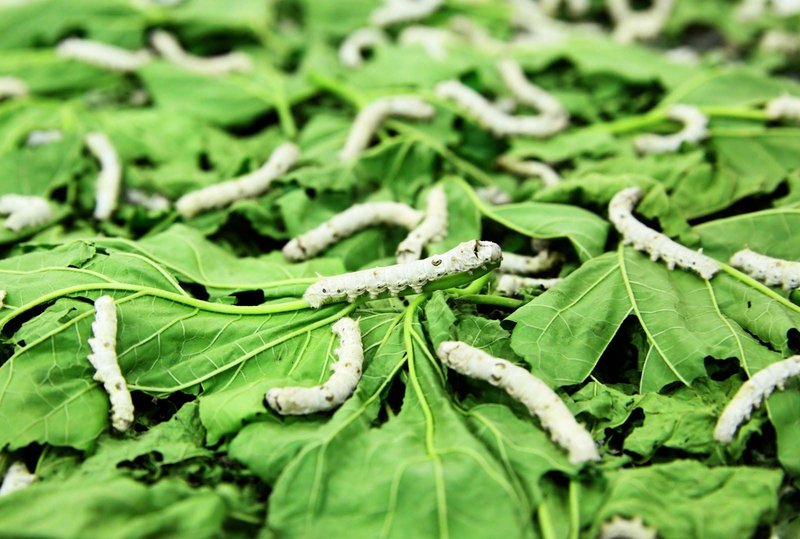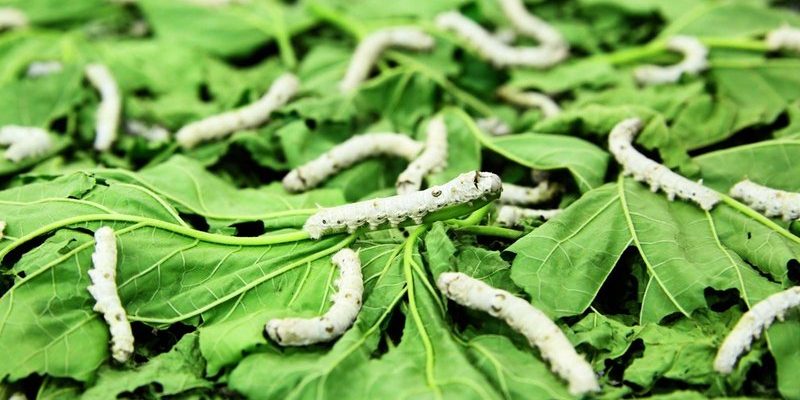
In the grand scheme of things, studying silkworms might feel a bit niche—like watching a documentary on a rarely seen animal. However, their simple life cycle and metabolic processes offer a wealth of information. Researchers use silkworms to explore how organisms grow and how they convert food into energy. With the right conditions, these little guys can reveal secrets about *life* itself.
The Life Cycle of Silkworms
To really appreciate how *silkworms* contribute to research, it’s essential to understand their life cycle. Silkworms go through several stages: egg, larva (or caterpillar), pupa, and adult moth. **The larval stage** is the most critical for research because this is when they consume vast amounts of food and grow rapidly.
In their larval stage, silkworms can eat up to **100 times** their weight in mulberry leaves! That’s like a human consuming a small car in just a few weeks. This voracious appetite allows scientists to study how different diets affect growth and metabolism. For instance, changing the type of leaves they eat can lead to interesting findings about nutrient absorption and energy expenditure.
Why Study Silkworms?
You might wonder why researchers choose silkworms over other model organisms, like mice or fruit flies. Here’s the thing: silkworms are both **affordable** and **easy** to rear in a laboratory setting. They have a short life cycle, which means researchers can conduct multiple experiments in a relatively short time frame.
Plus, silkworms have a *well-mapped genome*, making them good candidates for genetic studies. Their simplicity allows researchers to focus on specific variables without getting bogged down by the complexity often found in other species. This combination of factors makes them a perfect choice for studying metabolism and growth.
Metabolism in Silkworms: An Overview
Metabolism refers to the chemical processes that occur within a living organism to maintain life. Silkworms serve as a prime example to study these processes because they undergo significant metabolic changes during their development. Essentially, researchers can observe how silkworms convert food into usable energy.
One fascinating aspect is the ability of silkworms to metabolize various substrates. During their larval stage, they primarily rely on carbohydrates from the mulberry leaves they eat. By altering their diet, researchers can see how different nutrients affect growth rates and health. For example, adding proteins or fats to their diet can lead to noticeable changes in how quickly they grow and how much energy they expend.
Growth Rates and Factors Affecting Them
The growth rate of silkworms can be influenced by several factors. These include **temperature**, **humidity**, and **diet**. Since these conditions can dramatically affect their metabolism, scientists can manipulate them in the lab to see how silkworms respond.
For instance, raising the temperature and humidity can speed up their development, but it can also lead to increased mortality rates. By studying these variables, researchers gain insights into how environmental stressors impact metabolic health, which may have implications for other species, including humans.
Research Applications of Silkworm Studies
So, what exactly can researchers do with the information they gather from studying silkworms? A lot, actually! From **pharmaceutical development** to understanding basic biological processes, the applications are wide-ranging.
Silkworms are used in studies to test the effects of various drugs and substances on growth and metabolism. Their ability to rapidly grow and produce proteins makes them useful for producing *recombinant proteins*, which are proteins made from different genetic materials. This is especially helpful in developing vaccines or therapeutic proteins for medical treatments.
Additionally, understanding metabolic pathways in silkworms can shed light on metabolic disorders in humans. By comparing how these insects metabolize nutrients with human metabolism, scientists can uncover mechanisms that might lead to breakthroughs in treating conditions like obesity and diabetes.
The Future of Silkworm Research
As **technology** advances, the future of silkworm research looks bright. New techniques, like CRISPR gene editing, allow scientists to modify silkworm genes directly. This could lead to even more precise studies on how specific genes affect metabolism and growth.
Moreover, with an increasing focus on sustainability, silkworms may play a significant role in future research exploring more sustainable agricultural practices or bio-based materials. Their ability to convert plant materials efficiently into silk and protein makes them a model for eco-friendly solutions.
Challenges in Silkworm Research
While the potential for silkworms in research is immense, there are challenges too. For one, keeping them healthy in a lab setting requires careful monitoring of their environment—any fluctuation can lead to unexpected results. Researchers must also deal with the ethical implications of using living organisms in experiments, ensuring that they follow strict guidelines to minimize suffering.
Another challenge lies in the variation among silkworm strains. Different breeds may have unique metabolic rates and growth patterns, leading to inconsistent results. Standardizing these factors is critical for research outcomes to be reliable.
Final Thoughts on Silkworms in Research
In summary, silkworms serve as a vital tool in understanding **metabolism** and **growth**. They offer insights that reach far beyond their small size. By examining these creatures, researchers can unravel complex biological processes that have real-world implications for health and sustainability.
So, the next time you think of silkworms, consider all the incredible research they support. From their insatiable appetite to their rapid growth, these tiny creatures hold big secrets about life that researchers are eager to explore. Who knew that something as simple as a silkworm could have such a profound impact on science and medicine?

